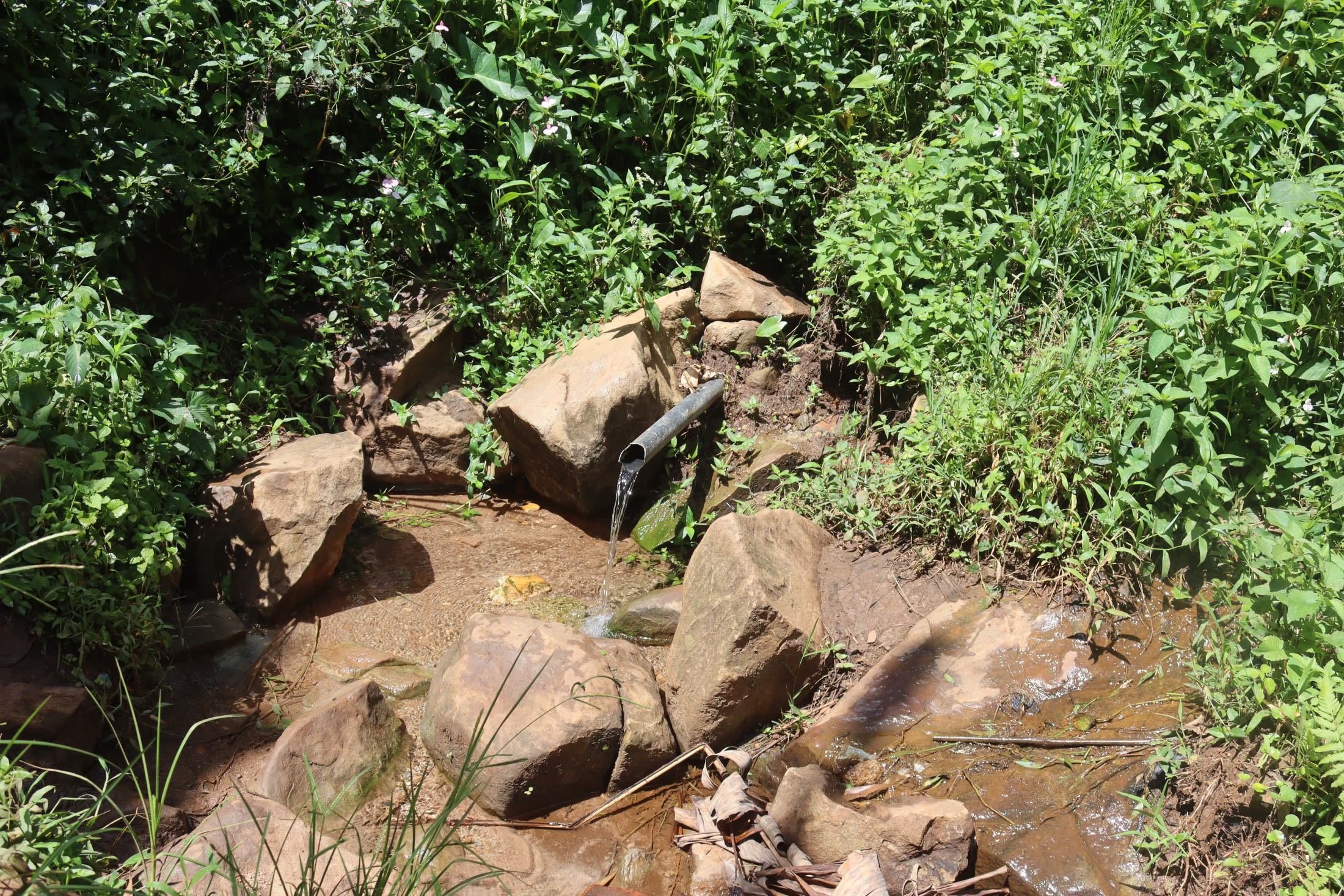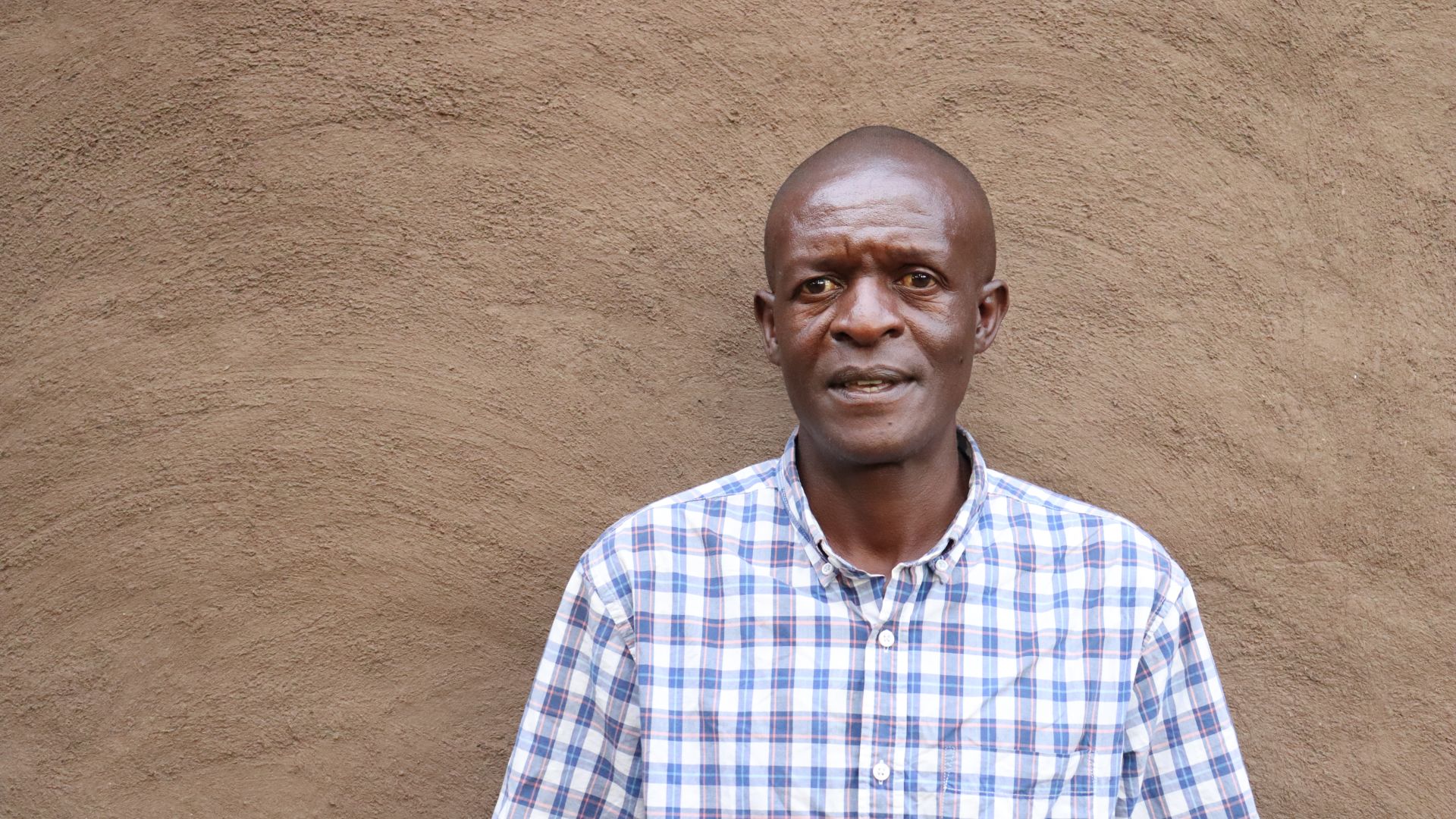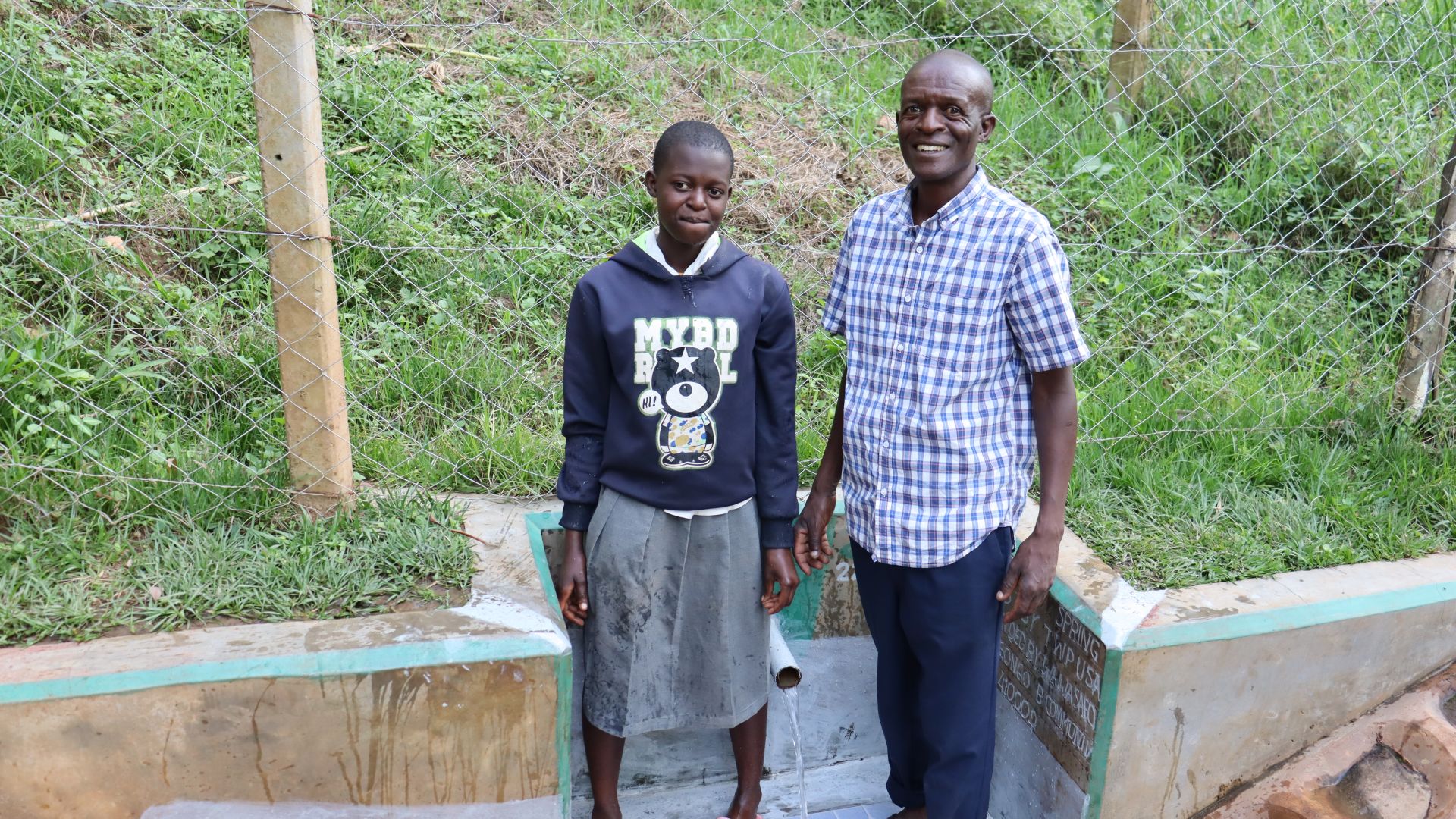March, 2024: Singong'o Community Spring Protection Complete!
Singong'o Community now has access to clean water! Thanks to your donation, we transformed their spring into a flowing source of naturally filtered water. We also installed a chlorine dispenser to provide added protection and trained the community on improved sanitation and hygiene practices. Together, these components will unlock the opportunity for community members to live better, healthier lives.

Celebrating clean water!
"My children will benefit immensely from the completion of this project. Their hygiene standards will greatly improve. My last-born daughter is in Junior Secondary School, and this water point is such a blessing to her. She doesn't have to walk a long distance to look for water. This water point will help her save time and energy to concentrate on her studies, and I believe that she will be able to do well in school. She dreams of becoming a doctor in the future. This project is a godsend to her, our family, and the entire village," said 44-year-old Chairperson of the Water User Committee and farmer Evans Inyangula.
"I grew up using water from the unprotected spring, and we always had health challenges because it was dirty. Accessibility was also a big issue. My children are now able to avoid these risks because water is now easily accessible," concluded Evans.

Evans drinks clean water.
Children were just as excited as adults about the new water point.
"Initially, fetching water from the unprotected spring was quite problematic, especially on rainy days because it was too slippery to descend to the scoop hole. The water wasn't good because it had [a] bad taste and odor. Now, we have stairs which make the place easily accessible. I don't have to worry about falling while carrying water from this water point. The water is safe for drinking, and the awful smell is now a thing of the past," said 14-year-old Prudence.
"My aging parents will greatly benefit from this water point. The availability of clean and safe water will help them maintain high hygiene standards [and] save time for other activities like farming or rearing domestic animals. [The] money that would have been spent on treatment of ailments related to unclean water can now be saved or utilized in income-generating activities," Prudence continued.

Prudence collecting clean water.
"I'm certain that my learning will no longer be disrupted by thoughts of walking a long distance to get water, either before or after school. I can now concentrate on my studies, and I'm sure my grades will also improve because I'll have more time to do my school assignments and revise for exams. I no longer have to worry about being absent from school due to infections caused by unclean water," Prudence concluded.
Preparing for Spring Protection
Community members worked together to source and carry all locally available construction materials to the spring. These included bricks, sand, stones, and fencing poles. Some people also chiseled away at large rocks to break them into gravel. Because people have to carry most items by hand, the material-collection process can take anywhere from a few weeks to months.
When the community was ready, we sent a truck to deliver the remaining construction materials, including cement, plastic tarps, and hardware. Then, our construction artisan and field officers deployed to the spring to begin work. Individual households provided meals throughout each day to sustain the work team.
From Open Source to Protected Spring: A Step-by-Step Process
First, we cleared and excavated the spring area. Next, we dug a drainage channel below the spring and several runoff diversion channels above and around the spring. These help to divert surface contaminants away.
To ensure community members could still access water throughout the construction process, we also dug temporary channels around the construction site from the spring's eye. This allowed water to flow without disrupting community members' tasks or the construction work. Excavation created space for setting the spring's foundation, made of thick plastic, wire mesh, concrete, and waterproof cement.

Beginning construction.
After establishing the base, we started brickwork to build the headwall, wing walls, and stairs. Once the walls had grown tall enough, we began one of the most crucial steps: setting the discharge pipe. The discharge pipe needs to be positioned low enough in the headwall so the water level never rises above the spring's eye, yet high enough to allow room for the average jerrycan (a 20-liter container) to sit beneath the pipe without making contact, which prevents cross-contamination.
If we place the discharge pipe too high above the spring's eye, back pressure could force water to emerge elsewhere. Too low, and community members would not be able to access the water easily. We embedded the pipe using clay (or mortar when the clay is in short supply) and placed it at an incline to ensure water flows in the right direction.

In coordination with brickwork, we pitched stones on both sides of the spring's drainage channel. We then cemented and plastered each stone, forming the rub walls. These walls discourage people and animals from standing in that area, which could cause soil erosion and a clogged drainage area.
We then cemented and plastered both sides of the headwall and wing walls. These finishing layers reinforce the brickwork and prevent water in the reservoir from seeping through the walls. In turn, enough pressure builds in the reservoir box to push water out through the discharge pipe.

Crafting the walls.
As the headwall and wing walls cured, we cemented and plastered the stairs and installed four tiles beneath the discharge pipe. The tiles protect the concrete from the falling water's erosive force while beautifying the spring and facilitating easy cleaning of the spring floor.
The final stage of construction is backfilling the reservoir box behind the discharge pipe. We cleared the collection box of any debris that may have fallen during construction. Then, we redirected the temporary diversion channels back into the reservoir box, channeling water into this area for the first time. We close all other exits to force water through only the discharge pipe.
We filled the reservoir area with the large, clean stones community members had gathered, arranging them in layers like a well-fitting puzzle. We covered the rocks with thick plastic to minimize potential contamination sources, then piled enough dirt on top to compensate for future settling.

Backfilling the spring.
Community members transplanted grass onto the backfilled soil to help prevent erosion. The collection area was fenced to discourage any person or animal from walking on it. Compaction can lead to disturbances in the backfill layers and potentially compromise water quality.
The construction process took about two weeks of work and patience to allow the cement and plaster to finish curing. As soon as the spring was ready, people got the okay from their local field officers to fetch water.

The completed spring.
We officially handed over the spring to mark the community's ownership of the water point. Happiness, thanksgiving, and appreciation were the order of the day, flowing in all directions.
"I feel hopeful. Members of this community were so appreciative and promised to take good care of the project," said Field Officer Daniel Mwanzia.
Training on Health, Hygiene, and More
Together with the community, we found their preferred date for training while considering other community calendar events, such as the agricultural season and social events. We requested a representative group of community members to attend training and relay the information learned to the rest of their families and friends.
When the day arrived, facilitators Rachael Dorcas and Daniel Mwanzia deployed to the site to lead the event. 22 people attended the training, including 14 women and 8 men. We held the training near the spring.

We covered several topics, including community participation in the project; leadership and governance; personal, dental, and environmental hygiene; water handling and treatment; spring maintenance; the importance of primary health care and disease prevention; family planning; soapmaking; how to make and use handwashing stations; and the ten steps of handwashing.
During the leadership and governance session, we held an election for the newly formed water user committee leaders, who will oversee the maintenance of the spring. We also brainstormed income-generating activities. Community members can now start a group savings account for any future minor repairs to the spring and a cooperative lending group, enabling them to develop small businesses.

Handwashing.
"Participants were so enthusiastic and eager to learn. They were so excited, and this could be depicted by their smiles, laughs, and responses to questions about how they engage in hygiene activities. At the end of the training, they pledged not only to observe all the practices as highlighted but also to spread the same information to other members of the community who were not in the training," said field officer Daniel (quoted earlier).

A participant sharing teaching posters.
"I believe this training will go a long way in boosting hygiene standards in my community. If only we can observe all the guidelines we have been given, then some infections will be a thing of the past," said participant Marko Imbayi.
Conclusion
This project required a substantial collaboration between our staff, our in-country teams, and the community members. When an issue arises concerning the spring, the water user committee is equipped with the necessary skills to rectify the problem and ensure the water point works appropriately and there is guaranteed public access in the future. However, if the issue is beyond their capabilities, they can contact their local field officers to assist them.
Also, we will continue to offer them unmatchable support as a part of our monitoring and maintenance program. We walk with each community, problem-solving together when they face challenges with functionality, seasonality, or water quality. Together, all these components help us strive for enduring access to reliable, clean, and safe water for this community.
With your contribution, one more piece has been added to a large puzzle of water projects. In Kenya, Uganda, and Sierra Leone, we're working toward complete coverage. That means reliable, maintained water sources within a 30-minute round trip for each community, household, school, and health center. With this in mind, search through our upcoming projects to see which community you can help next!
Thank you for making all of this possible!












 Protected Spring
Protected Spring
 Rehabilitation Project
Rehabilitation Project





























